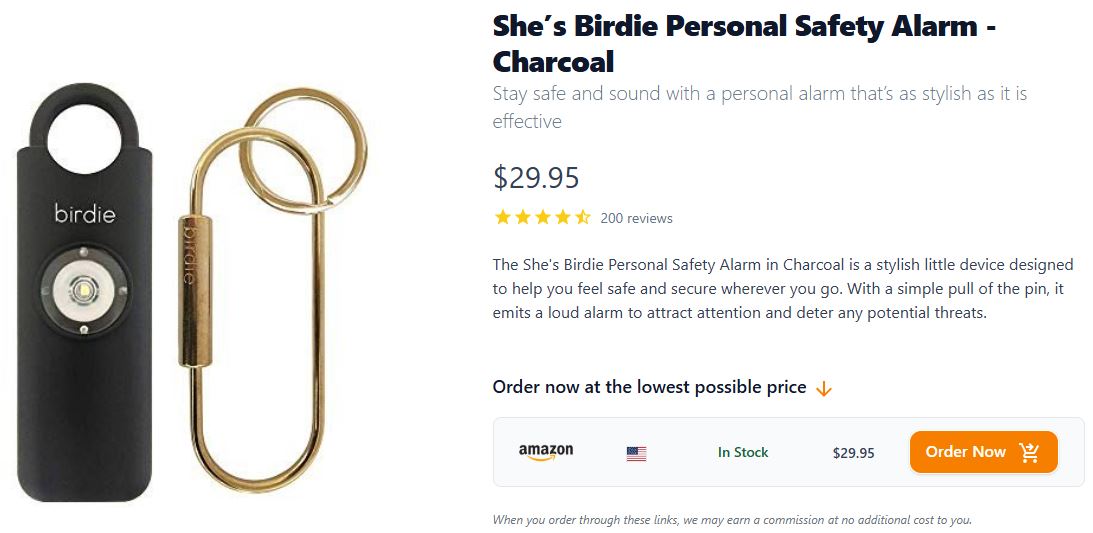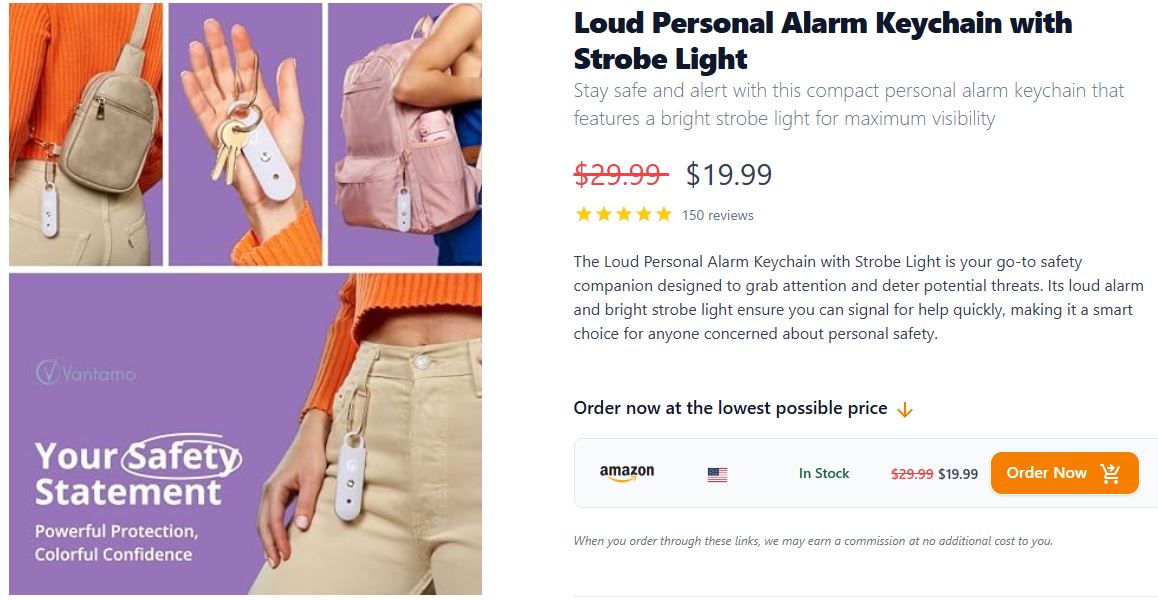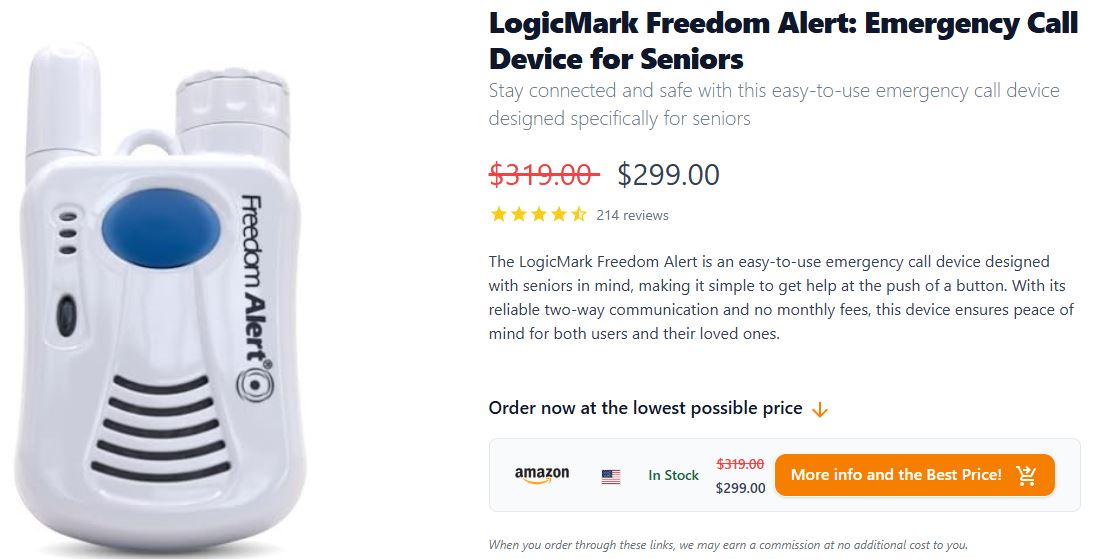Explore the Various Types of Personal Alarm Devices for Enhanced Safety
Discover the Benefits of Keychain Alarms for Everyday Protection

Compact and lightweight, personal alarm devices like keychain alarms are expertly crafted for everyday convenience and safety. These small yet powerful gadgets typically emit a piercing, high-pitched sound when activated, acting as an effective deterrent against potential threats. Ideal for individuals seeking peace of mind during their daily routines, keychain alarms can be effortlessly attached to keys, bags, or even belt loops, ensuring accessibility. This ease of use means that in a moment of crisis, you can swiftly and efficiently access your alarm to alert others and deter danger.
Research indicates that the sound produced by most keychain alarms can reach impressive levels exceeding 130 decibels, comparable to the noise generated by a jet engine during takeoff. This exceptional loudness serves as an effective way to draw attention and startle an assailant, significantly enhancing personal safety. Furthermore, the operational simplicity of these alarms enables even individuals with minimal technical expertise to utilize them effectively. With a variety of designs available, from sleek and discreet models to brighter, more eye-catching options, users can select a keychain alarm that aligns with their style while effectively increasing their security.
Additionally, many keychain alarms feature helpful enhancements such as LED lights, which can be invaluable in low-light situations. Some advanced models even include panic buttons that send immediate alerts to emergency contacts or local authorities. This multifaceted functionality makes keychain alarms a favored choice among students, joggers, and anyone who may find themselves in vulnerable situations, reinforcing their commitment to personal safety.
Enhance Your Safety with Wearable Alarms for Continuous Protection
Wearable alarms are ingeniously designed to integrate seamlessly into your daily attire, providing constant access to essential safety features. These personal alarm devices encompass items such as bracelets, necklaces, and clips that can be discreetly worn on clothing. A significant advantage of wearable alarms is their constant proximity, enabling an immediate response in emergencies without the need to fumble for a device.
With advancements in technology, many wearable alarms are now equipped with additional features, such as GPS tracking. This capability is particularly beneficial for individuals prone to wandering, such as those with dementia or young children. In an emergency scenario, caregivers can swiftly locate the individual through a connected smartphone app, thereby ensuring a rapid response and enhancing overall safety.
Moreover, wearable alarms are crafted with user comfort in mind. Many are available in stylish designs or subtle colors, making them suitable for both casual and formal occasions. This versatility encourages consistent use, ensuring that individuals remain prepared should a situation arise where they need to signal for help. The psychological aspect of wearing a personal alarm is significant; the mere presence of such a device can instill a profound sense of security and confidence, thereby enhancing the user’s mental well-being.
Secure Your Home with State-of-the-Art Home Security Alarms
When it comes to safeguarding your sanctuary, home security alarms play a crucial role in enhancing safety and peace of mind. These personal alarm devices are specifically designed to deter intruders and alert homeowners to potential threats such as fires or break-ins. Modern home security systems often incorporate various advanced technologies, including motion sensors, door and window alarms, and smart home integration, creating a comprehensive approach to safety that ensures residents feel secure within their homes.
Statistically, homes equipped with security systems are 300% less likely to be burglarized compared to those without, underscoring the deterrent effect of such systems. This is particularly essential for residents in urban areas where crime rates may be elevated. Many home security alarms can be controlled remotely via smartphones, enabling homeowners to monitor their properties in real-time. This level of control offers peace of mind, especially for those who frequently travel or have seasonal homes, allowing them to check on their property from anywhere.
Another critical component of home security alarms is their seamless integration with emergency services. If an alarm is triggered, many systems will automatically notify local authorities, ensuring that help is dispatched even if the homeowner is not present. This layered approach to security transforms home safety, making it a vital consideration for potential homebuyers or those looking to upgrade their existing systems for enhanced protection.
Protect Your Vehicle with Reliable Vehicle Alarms

Vehicle alarms represent a fundamental aspect of modern automobile security, providing robust protection against theft and unauthorized access. With the escalating rates of car theft, having a dependable personal alarm device installed in your vehicle can serve as a significant deterrent to theft. Most vehicle alarms are equipped with motion sensors and door sensors that trigger loud alerts if any irregular activity is detected, effectively safeguarding your vehicle.
The effectiveness of a vehicle alarm is highlighted by research indicating that cars without alarms are 65% more likely to be stolen than those equipped with them. Additionally, many modern vehicle alarms offer smartphone connectivity, enabling owners to receive real-time updates on their vehicle technology. This technology not only provides reassurance but also empowers owners to take swift action in the event of a theft, reinforcing the importance of vehicle security.
Furthermore, some vehicle alarms are integrated with GPS tracking systems, allowing for the recovery of stolen vehicles as authorities can pinpoint the vehicle’s location through connected apps. As vehicle security continues to evolve, integrating these personal alarm devices into your car’s safety features proves to be a wise and proactive investment in safeguarding your property.
Key Features to Consider When Choosing a Personal Alarm Device
Assess the Loudness and Sound Range for Maximum Effectiveness
The effectiveness of any alarm heavily relies on its loudness and sound range. An ideal personal alarm device should produce a sound that is not only loud enough to alert bystanders but also covers a wide range to ensure it can be heard from a distance. Alarms emitting sounds above 120 decibels are typically regarded as optimal, as they can penetrate through the noise pollution prevalent in urban environments, ensuring maximum visibility in crises.
Consider the scenarios in which you might need to utilize your alarm. For example, a jogger in a park or a student walking home at night requires an alarm that will attract attention swiftly and effectively. Many modern personal alarms incorporate sound technology capable of producing a series of varied tones, making them not only loud but also distinctive. This feature can help differentiate your alarm from others in an emergency, increasing the likelihood of receiving assistance.
Another important consideration is the directional sound capability. Some alarms are designed to project sound in specific directions, which can be particularly beneficial in crowded environments. Whether you find yourself on a bustling city street or a tranquil trail, the ability to adapt sound projection can significantly enhance the effectiveness, ensuring it reaches those who can help you.
Evaluate Battery Life and Durability for Long-Term Use

When selecting a personal alarm device, it’s crucial to assess both battery life and durability. An alarm that fails to function due to a dead battery offers no utility in a crisis. Look for devices that utilize high-quality batteries, which offer extended life and reliability. Many manufacturers now provide alarms with battery life indicators, allowing users to easily monitor whether a replacement is necessary and maintain readiness at all times.
Durability is equally essential, particularly for those leading active lifestyles. Personal alarms should be constructed from robust materials that can withstand drops, water exposure, and the wear and tear of everyday life. For instance, alarms designed for outdoor use should be weather-resistant, ensuring they operate reliably in various environmental conditions, which can be critical when every minute counts in an emergency.
User reviews frequently highlight the dissatisfaction stemming from purchasing devices with inadequate battery life or subpar build quality. Conducting thorough research can help you select a personal alarm device that performs consistently and lasts over time, which is crucial when safety is at stake.
Explore Additional Safety Features for Enhanced Protection
Beyond the fundamental alarm functionalities, many modern personal alarm devices come equipped with an array of additional safety features that significantly enhance their utility. For example, GPS tracking capabilities can dramatically improve personal safety by enabling individuals to be located promptly in emergencies. This feature is particularly valuable for parents with children or caregivers responsible for individuals with cognitive impairments, ensuring rapid assistance.
Emergency call buttons present another invaluable addition. Numerous devices now integrate a one-touch emergency contact feature that can immediately alert friends, family, or authorities to your predicament. This can be crucial in critical situations where every second counts, potentially saving lives. Moreover, some alarms offer two-way communication, enabling the user to converse directly with emergency services or loved ones, providing them with vital information about the ongoing situation.
Other innovative features include built-in flashlights, which are essential for nighttime safety and security. Many users find themselves in dark situations where a flashlight can be as crucial as an alarm. By combining these functionalities, manufacturers create more versatile personal alarm devices that cater to a broader range of user needs, ultimately enhancing their overall value and effectiveness in emergencies.
Prioritize Ease of Use and Accessibility for Quick Activation
The design of a personal alarm device should prioritize user-friendliness and accessibility. In emergencies, the last thing anyone wants is to struggle with a complicated device. Therefore, vital alarms must have intuitive interfaces, clear instructions, and simple activation mechanisms. A single button that activates the alarm can prove to be a lifesaver in high-pressure situations where every second matters.
Accessibility also pertains to the physical design of the device itself. Consider individuals with disabilities or those who may have limited dexterity. Devices should be lightweight, easy to hold, and equipped with features that allow for use by all, regardless of their physical capabilities. Some manufacturers offer models that can be activated using voice commands or those that can be easily attached to wheelchairs or other mobility aids, broadening their usability.
User feedback is invaluable when evaluating ease of use. Look for models with positive reviews that emphasize quick activation and straightforward operation. By prioritizing these factors, you ensure that your alarm device will be effective and supportive during emergencies, instilling confidence in your safety and well-being.
Master the Effective Use of Personal Alarm Devices
Quickly Activating Your Alarm in Emergencies
In an emergency, every second counts, and knowing how to activate your alarm device swiftly is paramount. Most alarms are designed for immediate response, featuring a prominent button that can be easily pressed in a panic. Always familiarize yourself with the device operation by reading the user manual or watching online tutorials, ensuring you are prepared, even in high-stress situations when time is of the essence.
If you anticipate needing to activate the alarm rapidly, practice a few trial runs in a safe environment. This practice can help alleviate anxiety and familiarize you with the activation process, ensuring that you don’t hesitate when the moment arises. Some devices may have a secondary feature, such as a pull pin or twist mechanism, which can provide an additional layer of security against accidental activation while still allowing for quick deployment.
Understanding the sound your alarm generates is also crucial. Being aware of the decibel level and type of alert can help you distinguish your alarm from others in an emergency. Each alarm has unique characteristics, and understanding these characteristics can significantly enhance emergency response and personal safety.
Strategically Carrying and Placing Your Alarm for Accessibility
The strategic placement and carrying of your personal alarm device can drastically enhance its effectiveness. For keychain alarms, ensure that the device is easily accessible. If the alarm is buried at the bottom of a bag, it won’t fulfill its purpose when needed most. Consider attaching it to a lanyard or wearing it as a pendant to keep it within immediate reach, ensuring swift access during an emergency.
For wearable alarms, placement on the body is crucial. A wrist or neck position allows for quick access, while ensuring the alarm is visible can deter potential threats. Additionally, practice quickly releasing the alarm from its position. This motion should be smooth and instinctual to ensure effectiveness in panic situations, allowing you to respond swiftly and effectively.
Awareness of your surroundings plays a significant role in effectively using your alarm. For instance, if you’re walking at night, having your alarm in hand or looped around your fingers can prepare you for any unexpected incidents. This proactive level of preparedness can make a considerable difference in your confidence as you navigate unfamiliar or potentially risky areas, enhancing your overall safety.
Regular Maintenance and Testing for Reliable Functionality
Regular maintenance and testing of your alarm device are essential to ensure its reliability in emergencies. Like any electronic device, alarms can experience issues that may compromise their functionality at critical moments. Check the battery regularly and replace it as needed to avoid any surprises during critical situations. Many alarms indicate low battery levels through lights or sound signals—be sure to heed these warnings to maintain optimal functionality.
Testing the alarm periodically is equally essential. Set aside a specific time each month to activate your alarm and ensure it sounds as expected. This practice not only confirms the device’s functionality but also helps you become accustomed to its sound, making it easier to recognize in real emergencies when your safety is at stake.
Additionally, familiarize yourself with any manufacturer updates or recalls related to your device. Staying informed can help you maintain the integrity of your alarm, ensuring it’s always ready for action when danger strikes. Keeping your alarm in excellent working condition is a proactive step toward enhancing your safety and security.
Explore the Multifaceted Benefits of Personal Alarm Devices
Enhancing Personal Safety with Effective Alarm Solutions
The primary benefit of personal alarm devices lies in their ability to enhance personal safety significantly. The mere presence of an alarm can deter potential attackers and increase awareness among bystanders in emergencies. In a world where personal safety concerns are increasingly prevalent, having a reliable alarm can provide an immediate means to alert others during times of distress, potentially saving lives.
Statistics reveal that individuals who carry personal alarms feel significantly more secure, especially in urban environments where crime is more prevalent. The ability to attract attention can be the difference between escaping a dangerous situation and becoming a victim. Many users report instances where simply displaying their alarm has deterred an assailant, underscoring the psychological impact these devices can have on personal safety and confidence.
Moreover, the integration of features such as GPS tracking and emergency call buttons can further bolster personal safety. These enhancements ensure that, should an incident occur, help is available at a moment’s notice, empowering users to feel empowered rather than vulnerable in potentially threatening situations. This empowerment leads to increased confidence to move freely in various environments.
Achieving Peace of Mind with Personal Alarm Devices
Carrying a personal alarm device can significantly reduce anxiety and elevate confidence levels. Knowing you have a reliable means of alerting others provides invaluable peace of mind, whether you’re walking late at night, traveling, or simply running errands. This peace of mind is vital for vulnerable populations, including women, older people, and individuals with disabilities, who may feel more at risk in certain situations.
In terms of mental well-being, the assurance that you can call for help if needed contributes to a greater sense of independence. Many individuals report feeling more confident engaging in activities that would typically provoke anxiety, such as traveling alone or exploring unfamiliar places. This empowerment leads to a richer, more fulfilling life experience, free from the constant burden of fear and anxiety associated with personal safety concerns.
The mental health benefits of personal alarms should not be underestimated. As societal concerns over safety continue to grow, the psychological comfort of having a personal alarm can be invaluable. Users often report an improvement in overall well-being simply by having a dependable safety measure they can rely on in uncertain situations, marking a significant enhancement in their quality of life.
Versatility of Personal Alarm Devices for Various Situations
One of the standout advantages of personal alarm devices is their remarkable versatility. These devices can be effective in a wide range of settings, from bustling urban environments to serene rural areas. Whether you’re hiking a secluded trail, attending a crowded festival, or commuting through a busy city, personal alarms can be adapted to suit various circumstances and user needs, making them invaluable companions.
Their compact size and lightweight nature ensure they can be easily carried in pockets, bags, or purses, guaranteeing they’re accessible when needed. This adaptability makes personal alarms an essential accessory for anyone who prioritizes safety, regardless of their lifestyle or environment, enhancing users’ sense of security wherever they go.
Furthermore, many personal alarms are now designed to cater to specific activities. For instance, models tailored for outdoor enthusiasts may include features such as built-in flashlights or emergency whistles. This targeted functionality enhances the user experience, making these devices even more appealing and effective in varied settings, ensuring that personal safety remains a priority.
Navigating Legal Considerations for Personal Alarm Devices
Understanding State Regulations Regarding Personal Alarms
Understanding the legal landscape surrounding personal alarm devices is vital, as regulations can vary significantly from state to state. While personal alarms are generally permitted in most areas, some states may impose specific laws regarding their use, particularly in public spaces. Researching local laws before purchasing or carrying a personal alarm is essential to ensure compliance and avoid potential legal complications.
In certain jurisdictions, the sound emitted by personal alarms may be subject to restrictions. For instance, there may be limits on the maximum decibel levels for devices used in residential areas to prevent disturbing neighbors. Familiarizing yourself with state regulations can help you choose a device that aligns with local laws and ensures you can use your alarm without concern or legal issues arising.
Additionally, certain states may have laws governing the sale and distribution of personal alarms. For example, some jurisdictions may require devices to meet specific safety standards or undergo certification. Staying informed about these regulations can guide your purchasing decisions and ensure you choose compliant devices that adhere to local laws.
Public Use Restrictions for Personal Alarm Devices
When utilizing personal alarm devices in public spaces, it’s essential to be aware of any local restrictions that may apply. Specific public venues, such as concert halls, sports arenas, or schools, may have specific policies regarding the use of loud alarms. While these regulations are often designed to maintain a peaceful environment, they can limit your ability to use personal alarms in specific settings.
Understanding the guidelines for public use enables you to navigate different environments safely and responsibly. For example, when attending a concert, it may be advisable to verify the venue’s security measures to ensure compliance and avoid unnecessary disturbances. Additionally, be mindful of your surroundings; using an alarm in a crowded space might cause undue panic or alarm among attendees, potentially leading to unintended consequences.
Furthermore, in public spaces such as airports or government buildings, loud alarms may be perceived as a security threat, potentially leading to legal repercussions. Remaining informed and respectful of public use restrictions can help ensure that your alarm serves its intended purpose without causing disruption or attracting unwanted attention.
Addressing Liability Concerns with Personal Alarm Devices
When it comes to personal alarm devices, liability concerns can arise, particularly regarding false alarms or misuse. Users may be held accountable if their alarm inadvertently triggers a response from emergency services, leading to the unnecessary use of public resources. Understanding potential liability issues is essential for responsible ownership and use of personal alarms.
Individuals should be aware of the legal ramifications in their state or locality. In some areas, repeated false alarms may result in fines or penalties, emphasizing the importance of ensuring that your device is functioning correctly and activated only in genuine emergencies. Proper training and familiarization with your device can help mitigate these risks, ensuring that you utilize your alarm appropriately and responsibly.
Additionally, educating others about the correct usage of personal alarms can help prevent misuse. For instance, if family members or friends are also using the device, ensure they understand the proper activation procedures and the circumstances under which it should be utilized. This collective understanding fosters a culture of responsible alarm use, reducing the potential for liability issues and enhancing community safety.
Navigating International Laws for Personal Alarm Devices
Traveling abroad with a personal alarm device necessitates awareness of international laws that may apply. Regulations concerning the import, export, and usage of personal alarms can vary from country to country. Some nations may impose strict rules regarding the types of alarms permitted, and in certain instances, carrying a personal alarm may be prohibited altogether.
Before embarking on your travels, it’s wise to search the laws governing personal alarms in your destination country. Some travelers have encountered legal challenges when attempting to bring alarms with them, particularly in regions with stringent security measures. By understanding these laws, you can avoid potential legal issues and ensure that your safety equipment is compliant with local regulations.
Additionally, being aware of local attitudes towards personal safety and self-defense devices can further inform your use of alarms while abroad. In some cultures, the use of personal alarms may be more accepted than in others, which can impact your comfort level when traveling. This knowledge allows you to navigate foreign environments with confidence, ensuring your safety remains a paramount concern throughout your journey.
Guidelines for Choosing the Ideal Personal Alarm Device
Assessing Your Unique Safety Needs for Optimal Device Selection
Determining the right personal alarm device begins with a thorough assessment of your individual needs and circumstances. Consider factors such as your lifestyle, daily activities, and any specific safety concerns you may encounter. For example, individuals who frequently walk alone at night may prioritize loud alarms with strong visibility. At the same time, those engaged in outdoor activities may require specialized alarms equipped with features such as GPS tracking.
Evaluate your typical environments as well. If you often navigate bustling urban areas, a discreet keychain alarm might be ideal. Conversely, if you spend time in isolated settings, a more robust wearable alarm with added safety features may be more appropriate. By understanding your unique circumstances, you can select a device that best meets your specific requirements and enhances your overall safety.
Additionally, consider your comfort level with technology. Some alarms may integrate with smartphone apps, while others operate independently of them. If you prefer straightforward devices that require minimal technical knowledge, focus on alarms that emphasize ease of use. This assessment will help you choose a personal alarm device that complements your lifestyle and provides the essential safety features you need.
Budget Considerations and Value Assessment for Personal Alarm Devices
When selecting a personal alarm, it’s crucial to evaluate your budget against the features offered by different models. While it may be tempting to opt for the cheapest available option, remember that a reliable alarm can be invaluable in emergencies. Assessing the cost of the potential benefits can help you determine the best value for your investment in personal safety.
Research models that provide a balance of essential features and affordability. High-quality alarms with durable construction, long battery life, and additional safety features may come at a premium but often offer greater peace of mind. Long-term savings are realized through investing in alarms that will endure and effectively serve their purpose over time, reinforcing your safety and security.
Reading user reviews and expert recommendations can also provide valuable insights into the value of various models. Look for feedback highlighting durability, ease of use, and overall satisfaction with the product. By considering both price and value, you can make an informed decision that prioritizes your safety without compromising your budget or financial stability.
Utilizing User Reviews and Recommendations for Informed Choices
User reviews and expert recommendations are invaluable resources when selecting a personal alarm device. Real-world feedback often reveals essential insights into reliability, functionality, and usability that may not be apparent in product descriptions. Look for reviews that detail personal experiences, highlighting both positive outcomes and potential drawbacks to gain a comprehensive understanding of the alarm’s performance.
Platforms such as Amazon, Best Buy, and dedicated safety equipment websites often feature user ratings that can guide your decision-making process. Please pay particular attention to reviews that mention the effectiveness of the alarm’s sound quality and any additional features that may enhance its safety capabilities and overall functionality.
Additionally, consider seeking recommendations from friends, family, or local community groups. Personal experiences shared by trusted individuals can lead you to reliable devices that have proven effective. Collecting a diverse array of opinions can help you identify standout models and avoid products that may not perform as expected, ensuring you make a well-informed decision in prioritizing your safety.
Evaluating Device Features and Functionality for Optimal Safety
Evaluating the features and functionality of a personal alarm device is essential to ensure it meets your specific safety requirements. Look for key attributes such as loudness, durability, battery life, and ease of use. Consider whether the device offers additional safety features, such as GPS tracking, emergency call buttons, or built-in flashlights, which can significantly enhance its overall effectiveness and usability in various situations.
Pay attention to the specific features that align with your personal safety needs. For instance, those who engage in outdoor activities may benefit from alarms with enhanced waterproofing or outdoor durability. Individuals with specific health concerns may prioritize alarms with fall detection capabilities, enabling quick alerts to caregivers in the event of an emergency, thereby enhancing their overall safety and well-being.
Lastly, consider the device’s properties. A personal alarm should be easy to carry or wear, ensuring it remains accessible when needed. Evaluating these features can help ensure you choose a device that not only meets your expectations but also adapts to your lifestyle and enhances your overall safety in various circumstances.
Prioritizing Ease of Use and Portability in Personal Alarm Devices
When selecting a personal alarm device, ease of use and portability are paramount considerations. Alarms should be designed with intuitive interfaces, enabling quick activation in emergencies. Look for devices featuring prominent buttons or straightforward mechanisms that make activation instinctual, even under stressful conditions, enhancing your ability to respond effectively.
Portability also plays a vital role in the usability of personal alarms. The ideal device should be lightweight and compact enough to carry comfortably, whether attached to a keychain, worn as jewelry, or clipped onto clothing. A device that easily fits into your pocket or bag enhances its accessibility, ensuring you always have it on hand when you need it most.
Furthermore, consider how the alarm can be seamlessly integrated into your everyday life. Many models come with attachments or designs that allow for customization, making them not only practical but also stylish. By prioritizing both ease of use and portability, you can select a personal alarm device that fits effortlessly into your daily routine, enhancing your sense of safety without compromising convenience.
Frequently Asked Questions About Personal Alarm Devices
What are the primary functions of personal alarm devices?
Personal alarm devices are designed to enhance personal safety by alerting others in the event of an emergency. They can deter potential threats and provide a rapid means to call for help in distressing situations, reinforcing individual security.
How loud are typical personal alarm devices?
Most personal alarm devices emit sounds ranging from 120 to 130 decibels, which is sufficiently loud to attract attention and deter potential attackers, ensuring effective response in emergencies.
Can personal alarms be utilized in public spaces?
Yes, personal alarms can generally be used in public spaces, but it’s essential to be aware of local regulations regarding noise levels and usage in specific venues to avoid legal complications.
Are personal alarm devices waterproof?
Some personal alarm devices are designed to be water-resistant or waterproof, making them suitable for outdoor use or in various weather conditions, enhancing their usability in diverse environments.
Do personal alarms require batteries for operation?
Most personal alarm devices require batteries; however, specific models come equipped with rechargeable batteries for added convenience. Always verify the battery requirements before purchasing to ensure optimal functionality.
What criteria should I use to choose the correct personal alarm device?
Assess your specific needs, consider your lifestyle, compare features, and read user reviews to identify a personal alarm device that best suits your safety requirements and enhances your security.
Are personal alarms effective at deterring attackers?
Yes, personal alarms can be highly effective in deterring attackers by attracting attention and startling them, often leading to their quick retreat from the scene, thereby enhancing personal safety.
Can children utilize personal alarm devices?
Yes, personal alarm devices are suitable for children, especially if they are designed for easy use and can be conveniently carried or worn, providing an added layer of safety.
How often should I test my alarm device to ensure it remains functional?
It is recommended to test your alarm device at least once a month to ensure it is functioning correctly and that the battery is charged or replaced, maintaining its reliability when needed.
Are there any legal restrictions concerning personal alarms?
Legal restrictions can vary by state regarding the use of personal alarms. It is advisable always to check your local laws to ensure compliance when using and carrying personal alarms, thereby avoiding potential legal issues.







Your exploration of keychain alarms as a personal safety tool brings to light an increasingly important topic in today’s society. The convenience and accessibility of such devices reflect a cultural shift toward proactive self-defense measures, especially for those who may find themselves alone or in vulnerable situations.
It’s interesting to see how much our society is evolving around personal safety, isn’t it? That shift you mentioned really resonates with how people are starting to take a more hands-on approach to their well-being. Keychain alarms and similar gadgets can feel like a simple solution, but they offer a real sense of empowerment for those who might otherwise feel vulnerable, particularly when heading out alone or in less familiar spaces.
“To further enhance your personal safety, check out our recommended keychain alarms that perfectly blend convenience with peace of mind.”
https://justincasegear.com/CodeRedDefense
I completely agree; the evolution of personal safety gadgets reflects a significant shift in how we approach our well-being in today’s society. It’s interesting to think about how these small tools can lead to a greater sense of security, particularly for those navigating urban environments or unfamiliar places alone.
You touch on an important aspect of personal safety devices that’s often overlooked: cultural shifts. While it’s true that keychain alarms and similar tools provide a sense of security, we have to ask ourselves how effective they really are in addressing the root causes of safety concerns.
Thank you for sharing your thoughts! If you’re interested in exploring some top-rated keychain alarms that prioritize safety and convenience, check out this helpful guide.
https://justincasegear.com/BulletProofHoodies
You’ve touched on such a crucial point with the rise of personal safety tools like keychain alarms. It really highlights how society is adapting to the world around us and prioritizing safety in everyday life. I find it interesting how these devices not only offer a sense of security but also remind us of the importance of being aware of our surroundings.
The exploration of keychain alarms as a means for enhancing personal safety is timely and relevant, especially given the increasing emphasis on personal security in our daily lives. While the efficacy of such devices is commendable, it’s interesting to consider not only their functionality but also the broader societal implications that come with their use.
You raise some important points about keychain alarms and their role in personal safety. It’s true that as concerns about safety grow, people are searching for ways to feel more secure in their daily lives. Keychain alarms offer a practical solution that’s easy to carry and use, but it’s fascinating to go a bit deeper into the conversation surrounding them.
You bring up a really important point about the broader societal implications of keychain alarms. It’s fascinating how a simple device can intersect with larger themes surrounding personal safety and community dynamics. When we talk about personal security, it’s not just about individuals protecting themselves; it also reflects societal conditions and how safe we feel within our environments.
While keychain alarms certainly provide an additional layer of safety, it’s important to consider their limitations. For instance, the effectiveness of the alarm relies heavily on the immediate environment and the presence of bystanders who might hear it and respond. What happens in more isolated areas where there are fewer people around? Additionally, the act of relying solely on such devices may foster a false sense of security, leading individuals to let their guard down in potentially risky situations.
I found this exploration of keychain alarms really enlightening, especially in our fast-paced lives where personal safety is such a crucial concern. It made me reflect on how small tools like these can have a significant impact on our feelings of security. I remember a friend of mine who lives in a bustling city; she started carrying a keychain alarm after a few unsettling experiences commuting home late at night. It not only provided her peace of mind but also empowered her to take public transport without the constant worry of being unprotected.
Your exploration of keychain alarms touches on an interesting trend in personal safety technology that has become increasingly relevant in our daily lives. However, while these devices offer a level of reassurance, their effectiveness as a comprehensive safety solution is worth discussing further.
Your exploration of personal alarm devices, particularly keychain alarms, resonated with me on multiple levels. I’ve often thought about how accessible safety must be in today’s fast-paced world, where many of us find ourselves rushing through crowded streets or navigating isolated areas, often feeling a twinge of vulnerability.